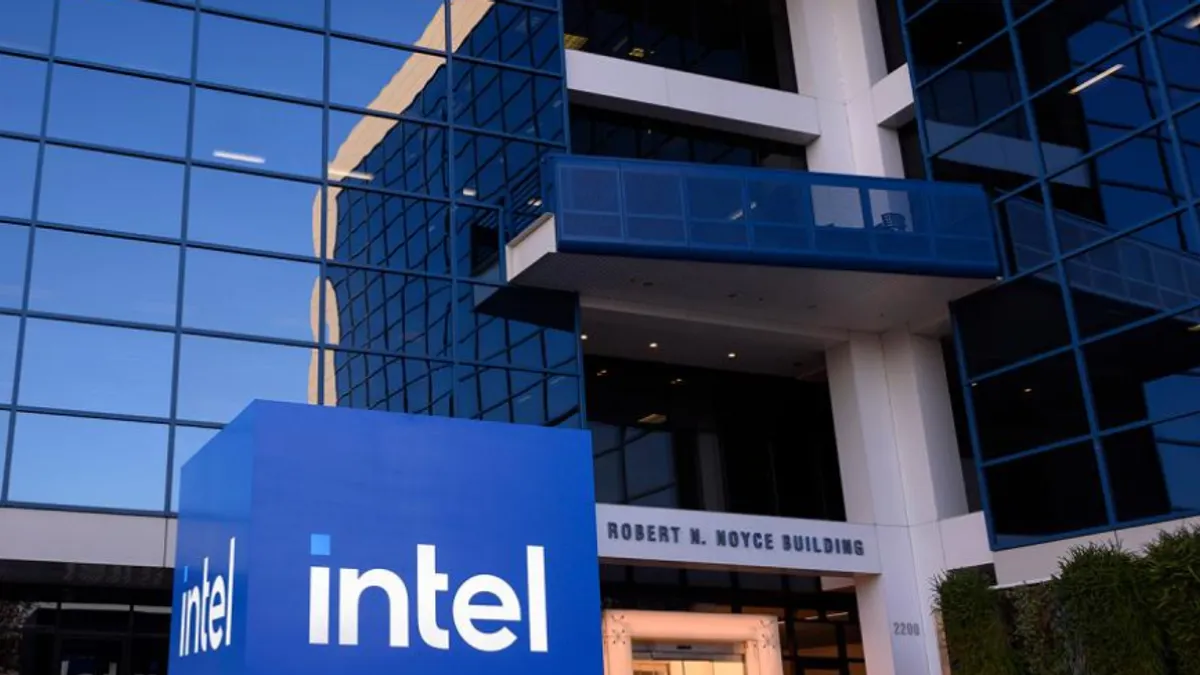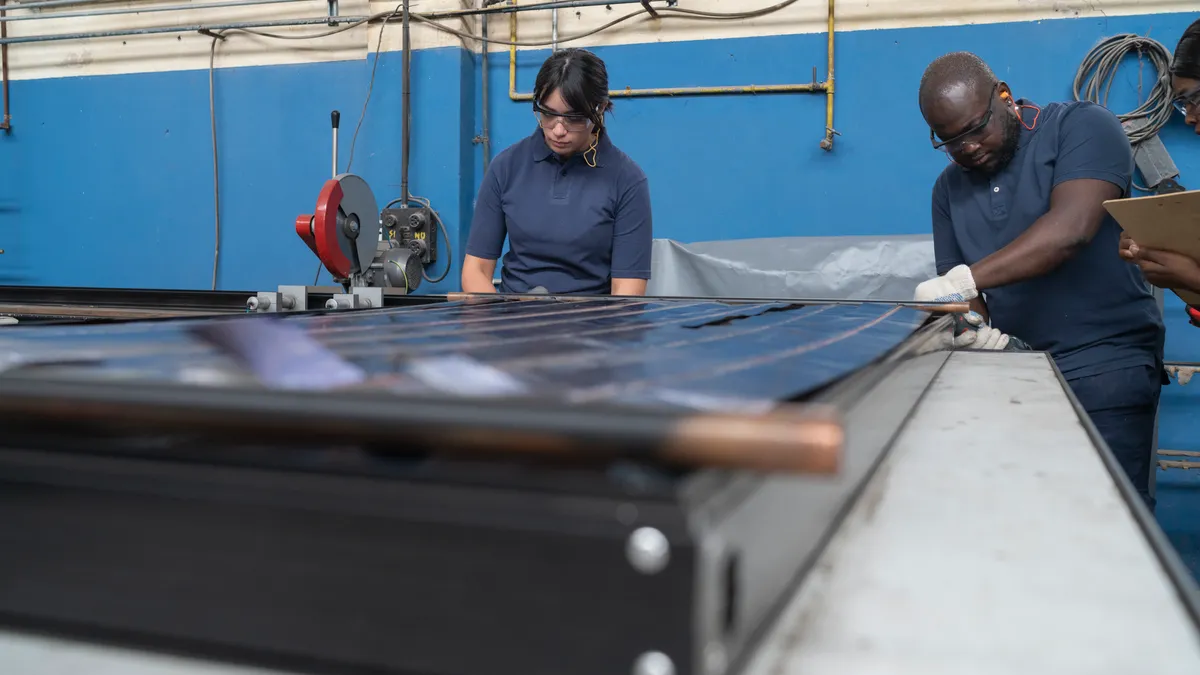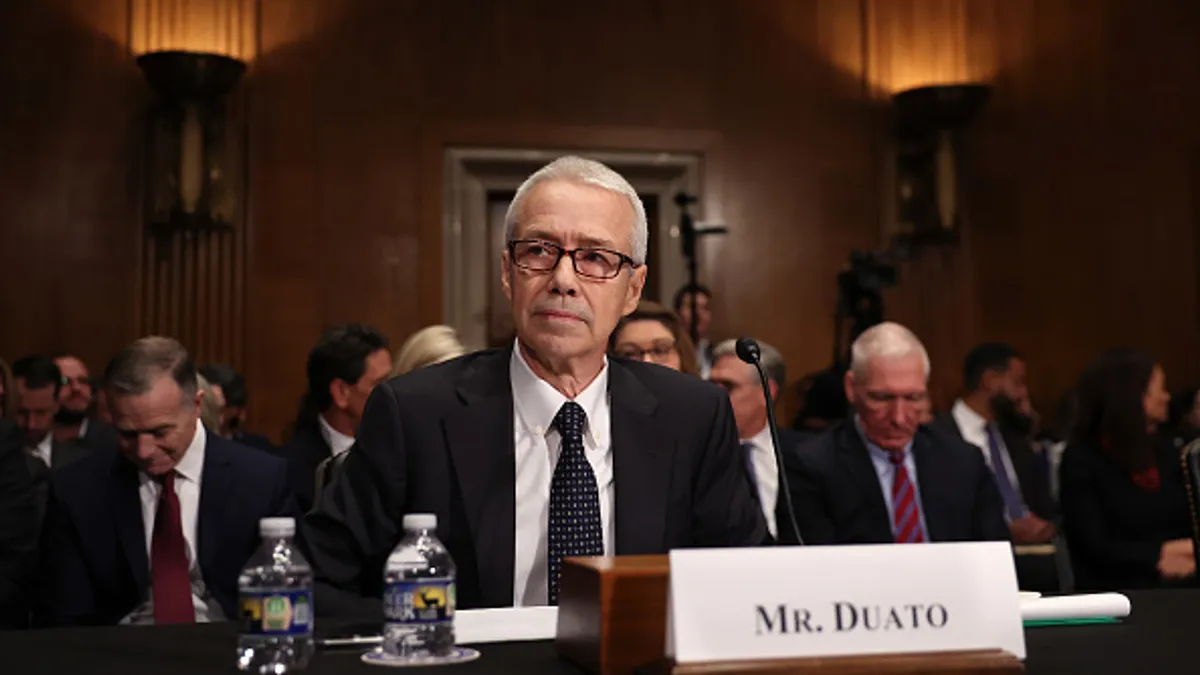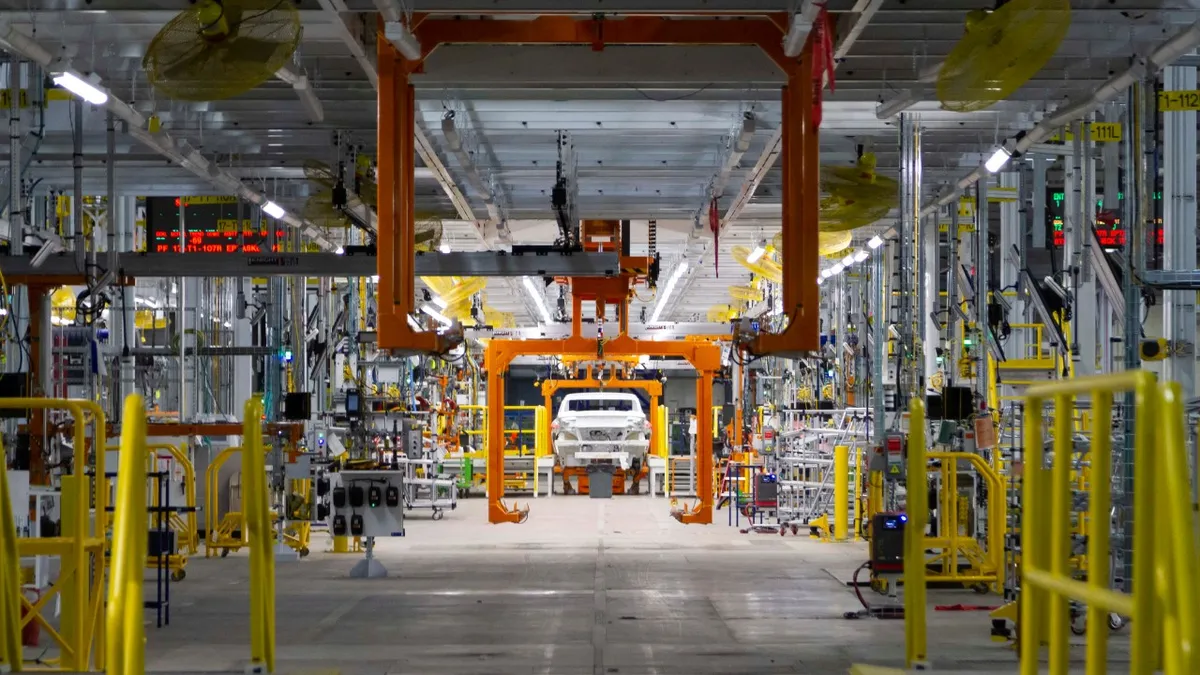In 2015, former Intel CEO Brian Krzanich first announced a goal of spending $1 billion with diverse suppliers within five years. At the time, the company was spending just a fraction of that amount.
“That was from a standing start,” said Jackie Sturm, Intel VP for global supply chain operations, in an interview with Supply Chain Dive. “When your CEO says five years from now, you’re going to be somewhere you’d never thought you were going, you have to create initiatives.”
The company made its goal — in fact exceeded it — spending $1.2 billion with women- and minority-owned suppliers in 2020. The company then set a new goal: to double the spend with diverse suppliers over a decade, meaning $2 billion spent by 2030. This year, the tech company hit that goal, eight years early.
“We have a playbook,” Sturm said. “The playbook to achieve significant results that are nonlinear inside this company is to say, ‘We are going to set big goals, we are going to back them public, we’re going to ruthlessly and publicly measure them, and then we’re going to continuously course-correct where we see the need.’”
Looking for a ‘sweet spot’ in diverse spending
To help advance the goal, Intel asked its commodity managers, who oversee sourcing and supplier relationships for the company, to put at least one diverse supplier in their slate of vendors, Sturm said.
Many of the company’s suppliers are large, publicly traded and often international firms, and so Intel had to look where smaller businesses played a role in its supply chain and other procurement areas, Sturm noted.
The company also asks its non-diverse suppliers to report their own spending with diverse-owned suppliers and subcontractors, according to the company’s latest corporate responsibility report, released in May. Intel might also use pricing as a lever to encourage higher tier suppliers to procure from diverse companies, Sturm said.
“We found that there was a sweet spot in manufacturing and construction where there were a lot of diverse electrical contractors or air handling contractors,” Sturm said.
Construction services for Intel and its suppliers could mean building factories, data centers, lab facilities, office buildings, and all of the ancillary services that go into standing up a new facility. Intel decided to open up the bid process to more small businesses as one path to adding more diverse suppliers, according to Sturm.
In total, construction and management for manufacturing and production facilities accounts for around 45% of Intel’s diverse spending, Sturm said. Spending with the suppliers in the company’s product supply chain accounts for considerably less.
“It’s a much smaller amount,” Sturm said. “The components generally come from large multinationals and then original design manufacturers in Asia, Mexico, Vietnam, etcetera. But it’s definitely an area that gets attention as we are sourcing for options there.”
Sturm added that “diversity never trumps merit” in the company’s sourcing functions, and in fact Intel has found that in four out of five cases diverse contractors outperform their category peers on the company’s report card for vendors.
Seeking sustainability ‘champions’
Diversity is one element in applying responsible and sustainable principles to a sourcing footprint. Intel has a supply chain responsibility team that educates the company’s sourcing personnel on a range of issues.
“It’s a small team, but they have outreach folks who connect with every commodity area,” Sturm said.
Each of Intel’s sourcing areas have what Sturm calls “champions” fielded by the responsibility team. These are sourcing personnel who lead sustainability efforts from within the procurement organization.
Along with finding champions and training employees, the responsibility team also evaluates supplier performance in terms of Intel’s sustainability goals and work with the sourcing team to address issues. The company will also publish those suppliers underperforming against sustainability requirements on labor, human rights and other issues.
It amounts to a sort of “naughty list” that Sturm said has decreased over time as the company addresses sustainability shortfalls. “The commodity teams and the responsibility team are working to understand the requirements, working with suppliers to develop action plans, sharing what we've learned,” Sturm said.
And while the responsibility team is small, it’s not difficult to staff it. “I can’t tell you how hard it is to select among the people who apply for responsibility jobs,” Sturm said. “People are passionate about making a difference.”























